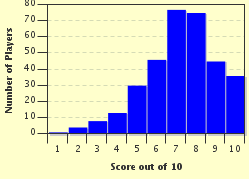Quiz Answer Key and Fun Facts
1. When I said to my children that there were no mobile phones in 1961, they appeared horrified. Instead, I told them that you had to utilize what common form of public telecommunication?
2. I remember 1969 and the excitement I had the first time I went to a Disney theme park. What Disney theme park did I visit that day?
3. One day my then three year old son asked for some microwaved chicken nuggets. The nuggets took three minutes to reheat, which he said was too long to wait and that he would rather eat them frozen. Good thing he was not around when I was a child; we had to wait an hour for our frozen dinners to cook. What was the catchy name for these pre-packaged meals first introduced in 1954?
4. At the museum my daughter saw a manual typewriter for the first time. She looked at me and said "didn't they have word processors when you were born"? I didn't have the heart to tell her that the phrase "word processor" was not coined until 1965. What company known for its contributions to computer technology is credited with creating the phrase "word processor"?
5. Growing up in 1960s America, I ate a lot of fast food, McDonalds, in particular. I can still remember the taste of my first Big Mac sandwich. What year did McDonalds introduce the now iconic Big Mac to its menu?
6. My son tells me his MP3 player holds over 8,000 songs and is the size of a credit card. So what, I say, my transistor radio could fit in an oversized shirt pocket and played an unlimited number of songs through the AM radio. What Japanese company first rose to international prominence by creating and selling affordable transistor radios in the late 1950s and 1960s?
7. In my youth, there was no ESPN and we were lucky if we saw two American football games a week. Indeed, I was watching the showdown between the powerhouse Oakland Raiders and my favorite team, the New York Jets, on November 17, 1968 when NBC switched away from the exciting finish to another scheduled program. To this day I and anyone who watched the game call the incident by what name (also the name of the program)?
8. I remember the first time I went to the Smithsonian Museum of Science and Industry in Washington DC. While there I saw a device created by Texas Instruments in 1967 called the TI-CalTech. Almost primitive by today's standards, the TI-CalTech was the first of what type of device?
9. The lifestyle of the American family has changed significantly since I was a child. My mother did not work outside the home during the 1960s. However, the number of women in general and, specifically mothers, holding jobs increased steadily throughout the decade. What US law was passed in 1963 that required employers to pay women performing the same job as men the same pay?
10. In 1965, my grandparents became the first people I knew to have a wondrous new machine that broadcast television shows in color. At this time, only three percent of US homes had color televisions. What year, in which the summer Olympics were held in Munich and "Bonanza" (the first all-color television series) was cancelled did sales of US color television sets exceed those of black and white sets?
Source: Author
adam36
This quiz was reviewed by FunTrivia editor
bloomsby before going online.
Any errors found in FunTrivia content are routinely corrected through our feedback system.

